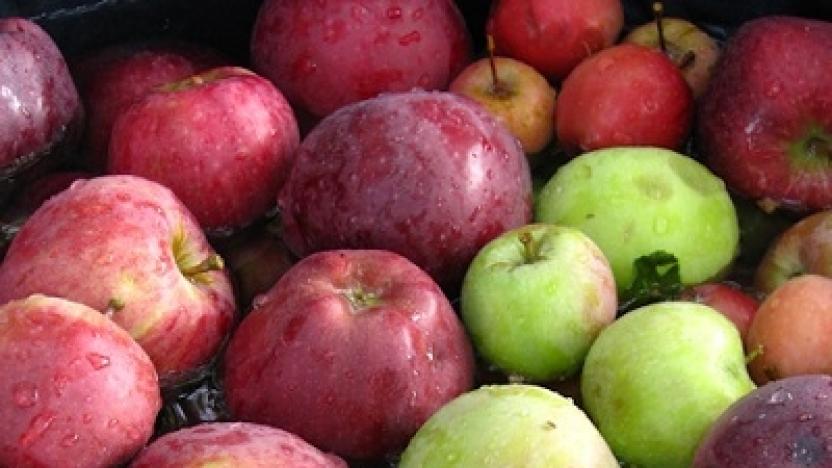
Did You Know? -- What an Apple Maggot Quarantine Means
The Washington State Department of Agriculture (WSDA) recently
discovered reproducing populations of apple maggot in locations in the
upper Methow Valley, and is poised to implement a quarantine extending
north of Gold Creek -- in order to prevent the spread of the pest to the
many commercial orchards in the lower valley.
Apple maggot is similar in appearance to a house fly, with the exception
of characteristic, black wing stripes. Female flies become active in
July, and can lay between 300-500 eggs in a season. Eggs mature into
1/4-inch larvae within 3-7 days, tunneling into the fruit and causing
fruit to appear dimpled or rotten. Unfortunately, because the apple
maggot is hosted not only by un-managed apples, but also by native
hawthorn, once it is established there is really no way to eradicate the
pest. We can only hope that it doesn't spread to the lower valley.
What, exactly, is an apple maggot quarantine -- besides a mouthful?
Here's what you should know, as a resident or a frequenter of the upper
Methow Valley, as the quarantine goes into effect later this fall:
- Don't move backyard fruit outside the quarantine. This includes apples, but also pears, plums, apricots, and cherries which have been identified as alternate hosts in some regions, especially on the east coast. (Ideally, don't move backyard fruit into the quarantine. The reason we have apple maggot in the Methow is because infected fruit was transported here from the west side, which already has the apple maggot.) It's still okay to move commercial fruit -- because commercial orchards in quarantined areas are inspected by the WSDA for apple maggot.
- Don't put backyard fruit waste in the trash. Household waste from the Methow Valley is transferred to the Okanogan Land Fill, which is located outside of the quarantine, and is surrounded by commercial orchards on the other side of Loup Loup. Instead, compost it. Or, if you actually think your fruit might be infected with apple maggot (trust us, you'd know) place it in a tightly-sealed, black plastic bag and let it cook in the hot sun (or freeze) for several weeks -- and then compost it.
- Don't move soil or woody debris outside the quarantine. At different life stages, the apple maggot can be found in the soil or even in the bark of fruit wood. So don't move soil or firewood outside of the quarantine. We are still working on understanding the full implications of the quarantine, but it is possible that once the quarantine officially goes into effect, the Twisp Transfer Station won't be able to accept green waste.
- If you think you might have apple maggot in your backyard trees -- contact Okanogan County Pest Control agent, Dan McCarthy, immediately at 509-322-1286. Here's what infected fruit looks like. Be aware that most backyard apple trees are usually infected by codling moth, not apple maggot. With codling moth, you will notice just one or two big worm holes in your fruit, and you will find just one or two larvae when you cut open the apple. If you do indeed have apple maggot, your fruit will be entirely rotten on the inside and full of small larvae.
Still have questions? Watch this 10-minute video, with highlights from our September First Tuesday presentation on the apple maggot quarantine. Here's a great article from WSU about the apple maggot. And of course, you should always feel free to reach out to our Ag Coordinator, Alyssa Jumars.
Originally published October 2018